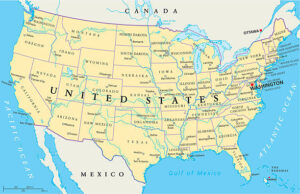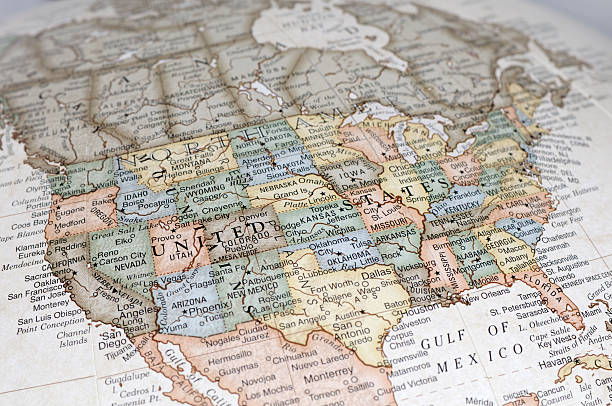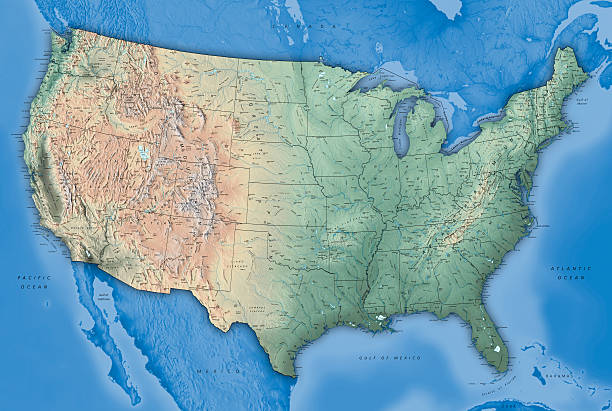
Discover the significance of the States:wz34j3r75r0= Map Of USA, exploring regions, cities, natural features, and more in this comprehensive guide.
Introduction
The map of the USA serves as a vital tool for understanding the vast geography and cultural diversity of the country. With its intricate details, it provides insights into the locations of states, cities, natural landmarks, and regional boundaries. As you delve into this guide, you will discover how the map of the USA not only represents physical geography but also reflects the rich tapestry of American life.
The Importance of Understanding the Map of the USA
Understanding the map of the USA is crucial for various reasons, including navigation, education, and cultural appreciation. It aids travelers in planning their journeys, helps students learn about geography, and enhances the knowledge of residents regarding their own country. Moreover, familiarity with the map of the USA fosters a sense of connection to the land and its history, enriching personal and collective identity.
The Regions of the USA
When exploring the map of the USA, one must consider the various regions that define its geographical landscape. The country can be divided into five main regions: the Northeast, Southeast, Midwest, Southwest, and West. Each region boasts unique characteristics, climates, and cultural influences, which become evident as one studies the map of the USA. For instance, the Northeast is known for its historical significance, while the Southwest features stunning deserts and rich Native American heritage.
Major Cities Highlighted on the Map of the USA
Cities play a pivotal role in shaping the identity of each state, and the map of the USA highlights these urban centers. From the bustling streets of New York City to the tech hubs of San Francisco, each city contributes to the country’s overall character. Major cities often serve as economic engines, cultural melting pots, and tourist attractions, making their identification on the map of the USA essential for understanding demographic trends and economic activities.

Landforms and Natural Features on the Map of the USA
The map of the USA prominently displays its diverse landforms and natural features, which include mountains, rivers, and lakes. The Rocky Mountains stretch across the western part of the country, while the Appalachian Mountains dominate the east. Major rivers like the Mississippi and Missouri traverse vast distances, providing essential resources and recreational opportunities. By examining the map of the USA, one can appreciate the stunning variety of landscapes that define this nation.
The Great Lakes A Geographic Marvel
Located in the northeastern part of the country, the Great Lakes are a significant feature on the map of the USA. Comprising Lakes Superior, Michigan, Huron, Erie, and Ontario, they represent the largest group of freshwater lakes in the world. Their vastness not only serves as a natural resource for water supply and recreation but also plays a critical role in regional transportation and trade, as shown on the map of the USA.
Understanding State Borders on the Map of the USA
State borders are crucial elements depicted on the map of the USA, delineating political and administrative boundaries. These borders have historical significance, often reflecting the evolution of the nation. The map of the USA reveals how borders were drawn, sometimes leading to conflicts or negotiations, while also showcasing the diversity among the states, each with its own laws and regulations.
Cultural Regions of the USA
In addition to geographical regions, the map of the USA also reflects various cultural regions, characterized by unique traditions, languages, and customs. From the Cajun culture of Louisiana to the Native American heritage found throughout the Southwest, each cultural region adds depth to the American experience. Understanding these cultural nuances through the map of the USA fosters a greater appreciation for the nation’s diversity.
Transportation Networks on the Map of the USA
Transportation networks, including highways, railroads, and airports, are prominently featured on the map of the USA. These networks facilitate movement across the country, connecting urban and rural areas alike. As you study the map of the USA, you’ll notice how transportation routes have influenced settlement patterns, economic development, and regional accessibility, making it easier for individuals to travel and engage in commerce.

The Role of Geography in American History
The map of the USA is not merely a representation of land; it encapsulates the history of the nation. Historical events, such as the westward expansion and the Civil War, were influenced by geographical factors that shaped the map of the USA. Understanding this relationship between geography and history enhances one’s ability to appreciate the complexities of American development and the challenges faced by different communities throughout time.
Climate Zones on the Map of the USA
The map of the USA also illustrates various climate zones, ranging from the arctic conditions of Alaska to the tropical climate of Florida. Understanding these climate zones is crucial for various aspects of life, including agriculture, tourism, and disaster preparedness. The diversity of climates across the map of the USA allows for a wide range of activities, from skiing in the Rockies to surfing in California, contributing to the nation’s recreational offerings.
National Parks and Protected Areas
National parks and protected areas are significant features on the map of the USA, showcasing the country’s commitment to preserving its natural beauty and biodiversity. Iconic locations such as Yellowstone, the Grand Canyon, and Yosemite attract millions of visitors each year, highlighting the importance of conservation. These protected areas not only serve as tourist attractions but also play a vital role in ecological preservation, emphasizing the need for responsible stewardship of the environment.
Economic Indicators on the Map of the USA
Economic indicators can also be analyzed through the map of the USA, revealing disparities in wealth, industry, and employment across different states. By examining economic data alongside the map of the USA, one gains valuable insights into the factors that contribute to the prosperity of various regions.
The Impact of Urbanization on the Map of the USA
Urbanization has dramatically transformed the landscape of the USA, a fact reflected in the map. As populations gravitate toward cities, the map of the USA highlights urban areas that have expanded rapidly, often at the expense of rural regions. This shift has implications for infrastructure, housing, and social services, making it essential to understand the trends of urbanization when analyzing the map of the USA.
The Influence of Immigration on Regional Demographics
Immigration has significantly influenced the demographics and cultural composition of the USA, as seen on the map. Various waves of immigrants have settled in different regions, contributing to the rich tapestry of American society. By studying the map of the USA, one can observe how immigration patterns have shaped local cultures, economies, and communities, reflecting the ongoing evolution of the nation.

Natural Disasters and Geographic Vulnerability
The map of the USA also reveals areas that are particularly vulnerable to natural disasters, such as hurricanes, earthquakes, and tornadoes. Understanding these geographic vulnerabilities is crucial for disaster preparedness and response efforts. By analyzing the map of the USA, individuals and communities can take proactive measures to mitigate risks and enhance resilience in the face of natural calamities.
Future Trends in Geographic Understanding
As technology advances, the way we understand and interact with the map of the USA continues to evolve. Geographic Information Systems (GIS) and digital mapping tools allow for dynamic representations of data, making it easier to analyze trends and make informed decisions. The future of geographic understanding promises to enhance our ability to engage with the map of the USA and address challenges related to urban planning, environmental conservation, and social equity.
Conclusion
The States:wz34j3r75r0= Map Of USA serves as a living document that encapsulates the nation’s history, culture, and geography. It reflects the ever-changing dynamics of society and the natural world, inviting individuals to explore and appreciate the diverse landscapes that define America. Whether for navigation, education, or cultural understanding, the map of the USA remains an essential resource that connects us to our shared heritage and future.
Read Also: The Best Sandals Resorts Luxury and Elegance
